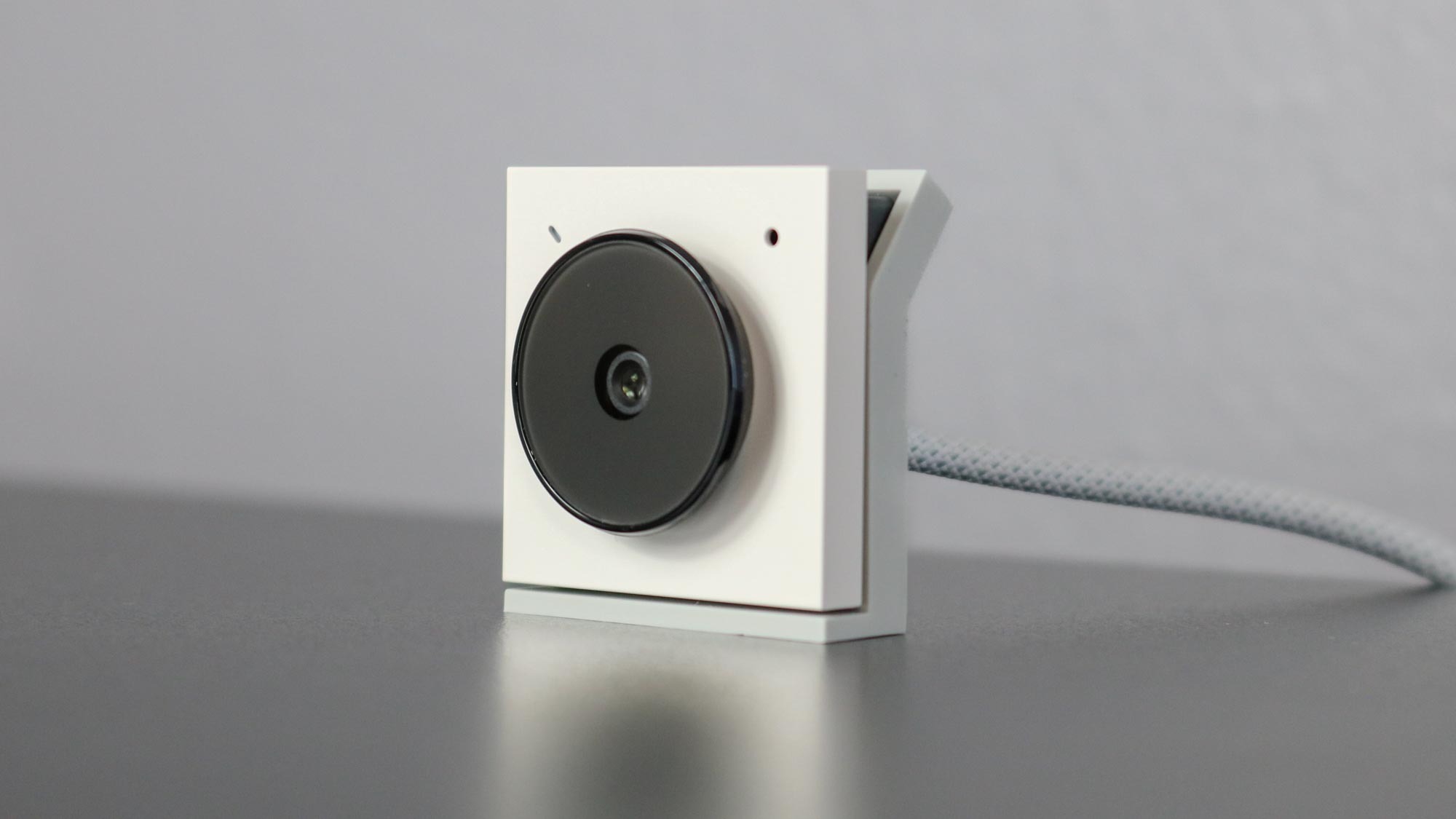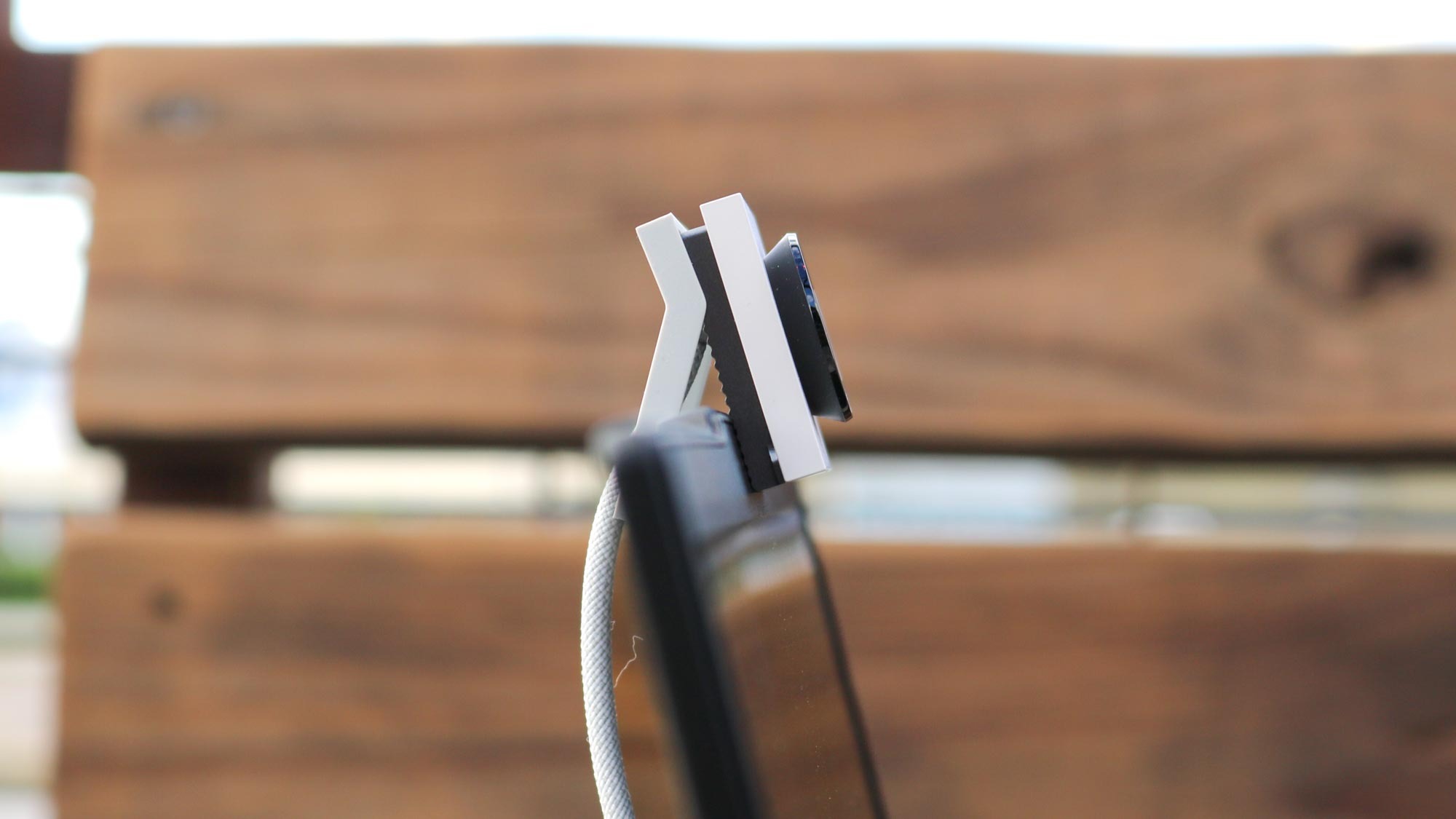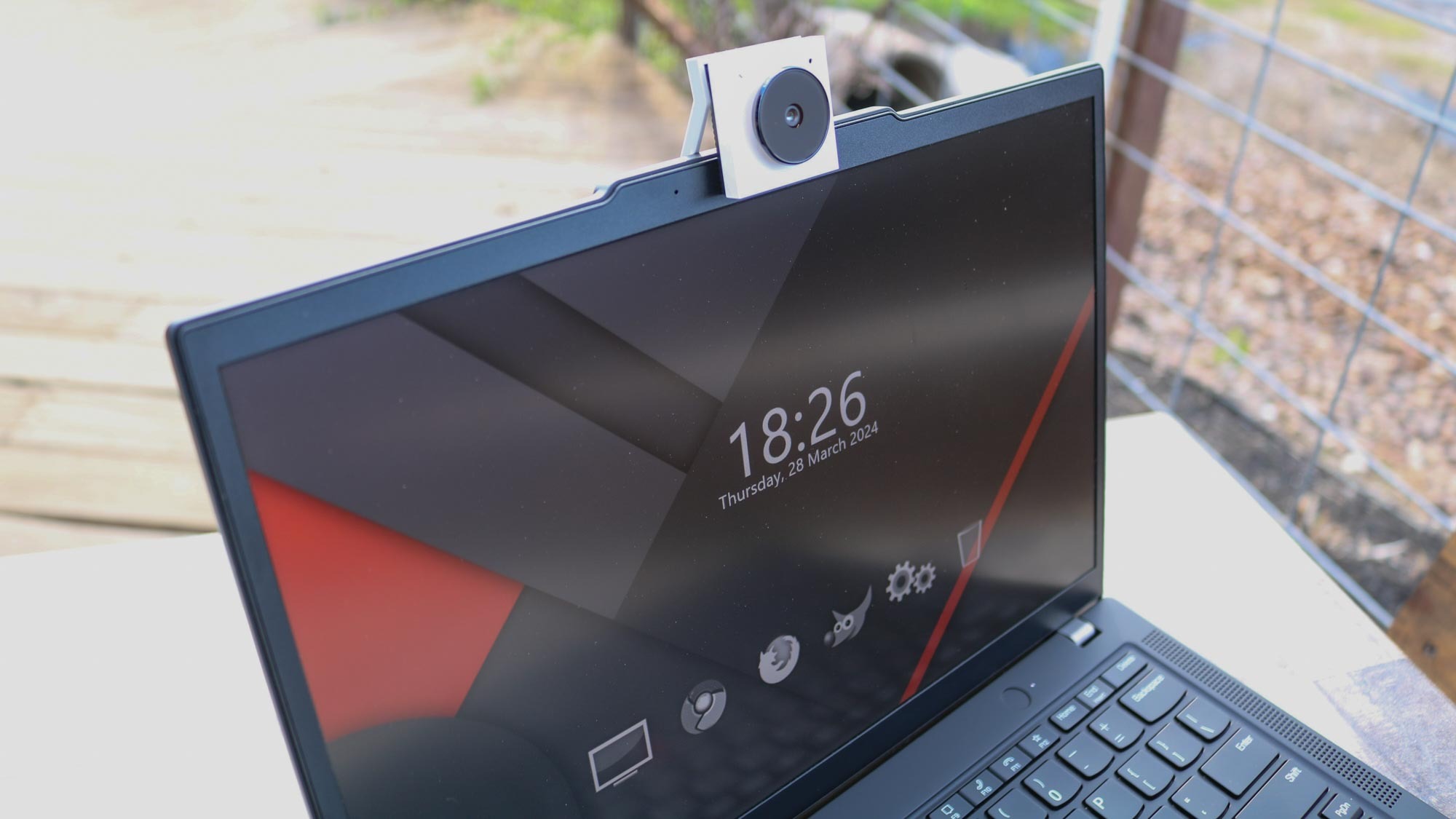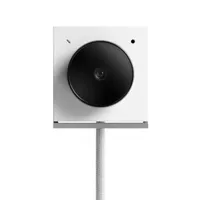I might be done with laptop cameras for good after trying the world's smallest webcam
Using a laptop for video calls will never be the same

Regardless of whether you spend top dollar on one of the best laptops or decide to play it safe with one of the best budget laptops, either way, your new laptop is going to have a built-in webcam.
While you would think spending more for a premium laptop like the new MacBook Air M3 or the Dell XPS 15 OLED would get you a much better one than you’d find on a budget laptop, unfortunately this isn’t usually the case. Laptops keep getting thinner and more powerful but their webcams just don’t get the same attention that the chips powering them do when it comes to upgrades.
I mainly use a desktop PC throughout my workday but there are times when even I need to switch to a laptop. Besides missing the extra screen space provided by my trusty ultrawide monitor, I immediately notice a difference between the two when it’s time to jump on a video call.
At home, I have one of the best webcams perched above my monitor but bringing an external webcam with you while traveling seems excessive, especially when you’re trying to pack light. I thought poor video quality was just something that I and everyone else on the other end of my calls would have to suffer through. That is until I got to go hands-on with the Opal Tadpole.
If you mainly use your laptop for video calls at home or you travel frequently for work but still need to stay in touch with home office while you’re away, here’s everything you need to know about the world’s smallest webcam and what my experience has been like using it for the past week.
Not your average webcam

Right off the bat, it’s clear that the Opal Tadpole isn’t like any other webcam you’ve seen before. This makes sense as it is the follow-up to Opal Camera’s C1 webcam which aimed to bring DSLR-style video quality to calls in a slightly larger form factor. Now though, the company is back and this time around, it’s created the world’s smallest webcam yet that also packs in some useful features.
The Opal Tadpole ($175, Amazon) was on the expensive side at launch but nowhere near the C1’s higher $300 price tag. These days though, you can often find it on sale for $45 off.
Get instant access to breaking news, the hottest reviews, great deals and helpful tips.
For the price, you get a compact webcam that clips onto your laptop that even comes with a rubber lens cover for when you’re not using it. The Opal Tadpole also has a braided USB-C cable which gives it a more premium look and a bead on the cable makes it easy to wrap the webcam around your wrist or to attach it to a bag when you’re on the move. There’s even a Yoyo case to help further protect the device while in transit.

If you frequently find yourself switching between Microsoft Teams, Google Meet, Zoom and other video conferencing apps, it can sometimes be difficult to remember where the mute button is. This can make it awkward when it’s finally your time to speak during a meeting. The Opal Tadpole solves this problem in a unique way as it has a mute button built directly into the end of its USB-C cable. Just tap it once to mute yourself and tap it again to unmute yourself. There’s also a red LED indicator to let you know when you’re muted.
Ultrabooks only

Before we go any further, I want to make one thing clear. The Opal Tadpole was designed with a particular style of laptop in mind: ultrabooks. While its built-in clip can be opened up to 35 degrees, this doesn’t give you nearly enough space to attach it to a thicker laptop.
Right after unboxing it, I wanted to try using the Opal Tadpole with my Lenovo Chromebook Duet 3 as we noted in our review that it has lackluster cameras. Even though Opal says the Tadpole only works with Macs and PCs, my Chromebook had no trouble recognizing the device. However, as it’s on the thicker side with a depth of 0.31-inches, I wasn’t able to clip the webcam onto it.
Opal Tadpole: was $175 now $129 @ Amazon
If you’re tired of poor quality video calls on your laptop but don’t want to carry around a big, bulky device, then this is the webcam to get. At 1.3 x 1.7 x 0.78-inches, it’s absolutely tiny but still delivers with 4K resolution. There’s a handy tap-to-mute button built into its braided USB-C cable and the included rubber camera cover prevents its lens from getting scratched.
Even though it’s designed with laptops in mind, I also tested out the Opal Tadpole on my desktop as that is where I take most of my video calls. As the device is flat on the bottom, I did manage to stand it up on one of my computer speakers but since it only has a 22-inch cable that’s made even shorter by the unremovable bead in the middle, I had to use a USB-C extension cable. It did work well once I had it set up properly though.
I ended up using the Opal Tadpole with my ThinkPad X13 laptop as it’s much thinner than my Chromebook. I clipped it in the center of the screen, plugged it in and it was ready to go with no software required.
A game changer for laptop video calls

Before testing out the Opal Tadpole, I would have avoided taking a video call on my laptop whenever possible. Now that I’ve been using it to do just that for the past few days though, I wouldn’t be opposed to busting out my laptop to be a bit more focused while on a video call.
Unlike at the desk in my home office where I have an ultrawide with a smaller monitor underneath it, there’s only one screen on my laptop and switching to another window means I won’t be able to see anything during a video call. With my laptop with the Opal Tadpole clipped to the top of its lid, it’s much easier to be present during a call instead of multitasking in the background.
Once I switched from my laptop’s built-in webcam to the Opal Tadpole, my coworkers immediately noticed a difference. Not only was the picture quality vastly improved but so too was the audio quality. The Opal Tadpole uses a 48MP Sony sensor with f/1.8 aperture for more life-like color. The microphone is quite interesting too as it’s a directional VisiMic microphone that only captures what the camera can see. This way, your webcam won’t pick up as much background noise and the people on the other end of the call will have an easier time hearing and understanding you.

While Opal sent over the white version of the Tadpole for me to test out, the black one definitely would have looked less out of place on top of my ThinkPad. Still, I liked how I could set it up in seconds and even though the bead in its cord is designed to make it easier to travel with, I found I could adjust it in such a way that I could tuck the entire cable behind my laptop’s lid.
I was a little concerned that attaching and then reattaching the Opal Tadpole to the lid of my laptop might damage its webcam. Fortunately though, my ThinkPad is equipped with a webcam cover which I had closed to protect the lens while using the Tadpole.
Not leaving home without it
After using the Opal Tadpole for a week, I was so impressed that I looked into the company’s C1 webcam for my desktop. I even went as far as to download Opal’s Composer software for the webcam, only to realize that it’s made for macOS and there isn’t a Windows version yet. If that changes though, I wouldn’t mind seeing what the company’s more powerful webcam is capable of.
In the meantime though, the Opal Tadpole has earned a place in my tech travel bag and I’m planning on bringing it with me to Computex in Taiwan this summer. However, I might keep it handy for those times when I want to take a video call without distractions while looking and sounding the best that I can. I’m certainly not the target audience for the Opal Tadpole as I primarily work on my desktop but this little webcam has certainly grown on me.
More from Tom's Guide
- I streamed 500 miles of sim racing with Elgato Facecam MK.2 webcam
- How to use your phone as a webcam and why you should
- Windows 11 is getting a webcam upgrade with a little help from Android

Anthony Spadafora is the managing editor for security and home office furniture at Tom’s Guide where he covers everything from data breaches to password managers and the best way to cover your whole home or business with Wi-Fi. He also reviews standing desks, office chairs and other home office accessories with a penchant for building desk setups. Before joining the team, Anthony wrote for ITProPortal while living in Korea and later for TechRadar Pro after moving back to the US. Based in Houston, Texas, when he’s not writing Anthony can be found tinkering with PCs and game consoles, managing cables and upgrading his smart home.

